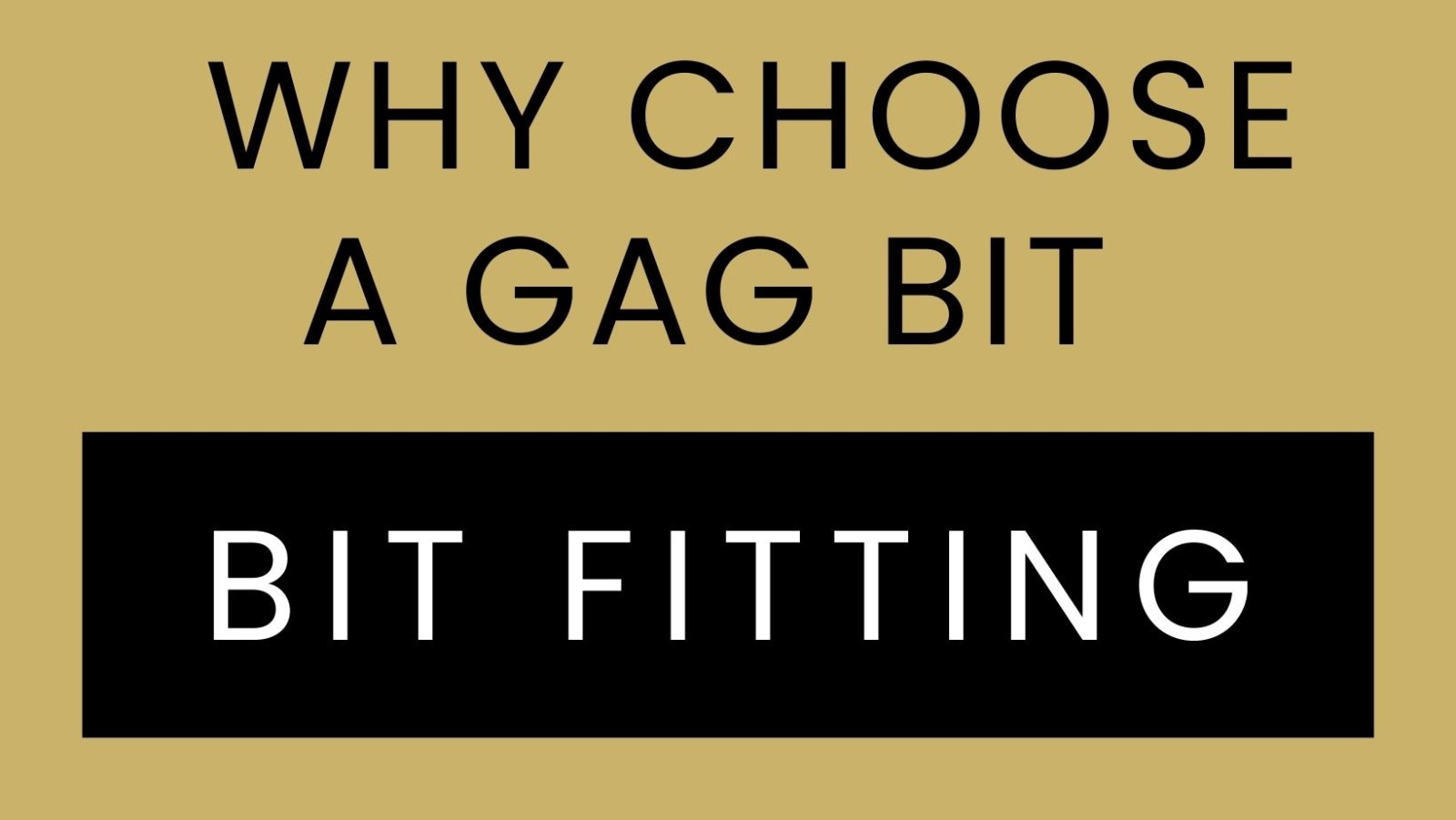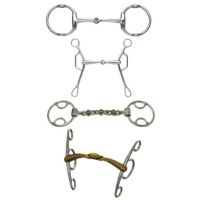
Choosing the right equipment for your horse can be a lengthy and complex process. To help you make an informed decision, we've created this guide to explain the gag bit and its common uses.
Please note that this is a general overview, and not all options will suit every horse. Any changes in tack should be made gradually, one at a time, so you can assess whether your horse is comfortable and happy with the new piece of equipment.
T.jpg) The gag family of bits cover a wide array of different types of bits however the main key identifiers are the rein attaches at a lower point of contact on the bit than the cheekpieces of the bridle. They apply leverage and poll pressure as an additional aid for breaking and turns. They will have a sliding or “loose ring” attachment to the mouthpiece which will apply pressure to the corners of the lips.
The gag family of bits cover a wide array of different types of bits however the main key identifiers are the rein attaches at a lower point of contact on the bit than the cheekpieces of the bridle. They apply leverage and poll pressure as an additional aid for breaking and turns. They will have a sliding or “loose ring” attachment to the mouthpiece which will apply pressure to the corners of the lips.
 It's essential to adjust the bit under the guidance of a professional to ensure your horse's comfort and avoid any discomfort. As a general rule snaffle bits should be fitted as follows;
It's essential to adjust the bit under the guidance of a professional to ensure your horse's comfort and avoid any discomfort. As a general rule snaffle bits should be fitted as follows;
Cheeks: the cheekpieces of the gag bit needs to be fitted with about a fingers width clearance from the horses face so as to avoid pinching.
Mouthpiece: Generally, the bit should be positioned to create two gentle wrinkles at the corners of the horse's mouth. However, this can vary based on the horse's mouth conformation and individual preference. Some horses may prefer or require their bits to be set higher or lower.
Chin strap: these can be fitted with some of the gag family of bits. they can give a slight curb action as an addtional aid and they also stop the bit from over rotation.
 Gag bits are extremely popular and most riders go to bit for a step up from a snaffle when more control is needed. They can offer riders a few different options of levels of strength in one bit. They are also extremely effective and accepted by most horses as the mouthpiece can remain the same as their snaffle versions.
Gag bits are extremely popular and most riders go to bit for a step up from a snaffle when more control is needed. They can offer riders a few different options of levels of strength in one bit. They are also extremely effective and accepted by most horses as the mouthpiece can remain the same as their snaffle versions.
 Gag bits can come in a number of different variations. The most commonly used one is the Universal or Dutch gag but they also include the Cheltenham or Balding gag, American gag the Neue Schule Jumper and the Beval or Wilkie bit. All of these bits look different but they all provide the same action and the rein will always attach onto the bit at a lower fixed point than the cheekpieces of the bridle, with a sliding attachment to the mouthpiece.
Gag bits can come in a number of different variations. The most commonly used one is the Universal or Dutch gag but they also include the Cheltenham or Balding gag, American gag the Neue Schule Jumper and the Beval or Wilkie bit. All of these bits look different but they all provide the same action and the rein will always attach onto the bit at a lower fixed point than the cheekpieces of the bridle, with a sliding attachment to the mouthpiece.
 Gag bits are a good option for horses that become strong, lean against the contact or run onto the forehand. They can be used with a leather chin strap giving a gentle curb action and they can be used with a single rein, double reins or roundings (however roundings will always muddy the signals given to the horse so should only be used as a last resort)
Gag bits are a good option for horses that become strong, lean against the contact or run onto the forehand. They can be used with a leather chin strap giving a gentle curb action and they can be used with a single rein, double reins or roundings (however roundings will always muddy the signals given to the horse so should only be used as a last resort)
